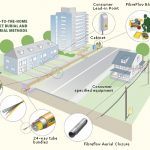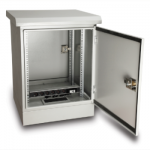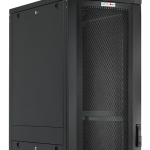22 Jan All about fiber optics
What does a fiber optic cable do?
A fiber optic cable is a type of cable that uses glass or plastic threads to transmit data. These threads, or fibers, are extremely thin and are surrounded by a protective coating. They are able to transmit data using light, which allows for much faster and more efficient data transfer compared to traditional copper cables. Fiber optic cables are often used for high-speed internet and data transmission, as well as in medical equipment, military communications, and other specialized applications.

Fiber Optic Cable
Is fiber optic better than WIFI?
Fiber optic is generally considered to be better than WiFi for several reasons:
- Speed: Fiber optic connections offer much faster speeds than WiFi. They are capable of reaching speeds of up to 10 Gbps, while the fastest WiFi standard (WiFi 6) currently tops out at around 9.6 Gbps.
- Reliability: Fiber optic connections are less prone to interference and signal loss than WiFi, which can be affected by walls, other electronic devices, and even weather conditions.
- Latency: Fiber optic connections typically have lower latency than WiFi, which means there is less delay in the transfer of data. This is important for applications such as online gaming or video conferencing.
- Distance: Fiber optic cables can transmit data over much longer distances than WiFi without the need for signal boosters.
However, it’s important to note that not all areas have access to fiber optic internet, and for some people, WiFi may be the only option. Additionally, WiFi can be more convenient as it doesn’t require a physical cable connection, and it’s easier to set up and move around.

Is-fiber-optic-better-than-WIFI
What are the disadvantages of fiber optic cable?
While fiber optic cables have many advantages, there are also some disadvantages to consider:
- Cost: Installing a fiber optic cable infrastructure can be quite costly, especially for businesses or individuals who want to set up their own networks.
- Fragility: Fiber optic cables are made of glass or plastic, which makes them more fragile than traditional copper cables. They can be damaged if bent too sharply or exposed to extreme temperatures.
- Installation: Installing a fiber optic cable infrastructure can be difficult and time-consuming, requiring specialized equipment and trained personnel.
- Limited availability: Fiber optic internet services may not be available in some areas, especially in rural or remote locations.
- Weather sensitivity: Fiber optic cables can be affected by extreme weather conditions, such as heavy rain, snow, or lightning, which can cause service interruptions.
- Security vulnerability: Fiber optic cables can be tapped and intercepted, and it’s more difficult to detect than in copper cables.
It’s also worth noting that the distance between the device and the internet service provider’s infrastructure is limited by the technology used to light the fiber. It’s called the distance limitation.

What is the difference between fibre optic and Ethernet cables?
Fiber optic cables and Ethernet cables are both types of cables used to transmit data, but they have some key differences:
- Transmission medium: Fiber optic cables use light to transmit data, while Ethernet cables use electrical signals.
- Speed: Fiber optic cables can transmit data at much faster speeds than Ethernet cables. The fastest Ethernet standard (40 Gigabit Ethernet) currently tops out at around 40 Gbps, while fiber optic cables can reach speeds of up to 100 Gbps and beyond.
- Distance: Fiber optic cables can transmit data over much longer distances than Ethernet cables without the need for signal boosters. Ethernet cables are typically limited to 100 meters or less, while fiber optic cables can transmit data over distances of several kilometers.
- Immunity to interference: Fiber optic cables are less prone to interference from electromagnetic interference (EMI) and radio frequency interference (RFI) than Ethernet cables.
- Durability: Fiber optic cables are more durable than Ethernet cables, as they are not affected by temperature changes, humidity and are not easy to be tapped.
- Connector: Ethernet cables use RJ45 connectors while Fiber Optic cables use ST, SC, LC connectors.
In summary, while Ethernet cables are still widely used for many applications, fiber optic cables offer faster speeds and greater resistance to interference over longer distances, making them the preferred choice for high-bandwidth applications such as data centers and internet service providers.

Is fiber optic safer than 5G?
Fiber optic and 5G are both technologies used for data transmission, and they have different safety considerations.
Fiber optic cables are considered to be safe as they do not emit any electromagnetic radiation. They are also physically secure, and tapping a fiber optic cable is difficult and can be easily detected.
5G, on the other hand, is a wireless technology that uses radio waves to transmit data. The safety concerns associated with 5G primarily revolve around the potential health effects of exposure to the radiofrequency (RF) radiation emitted by 5G antennas and devices. While the World Health Organization (WHO) and other health organizations have stated that the levels of RF radiation emitted by 5G networks are within safe limits, some people have raised concerns about the long-term effects of exposure to this type of radiation.
It’s worth noting that 5G technology is still in its early stages, and more research is needed to fully understand its potential health effects. Additionally, 5G networks will not entirely replace fiber optic networks and will be an addition to the existing networks.
In summary, fiber optic cables are considered to be safe as they do not emit any electromagnetic radiation and are physically secure, while 5G safety concerns are mainly related to the potential health effects of exposure to the radiofrequency radiation emitted by 5G antennas and devices. More research is needed to fully understand the potential health effects of 5G.
Is fiber optics becoming obsolete?
Is fiber optic cable wired or wireless?
Fiber optic cable is a wired technology. It uses glass or plastic threads, called fibers, to transmit data using light. These fibers are enclosed in a protective coating and are typically bundled together in a cable. The cable is then connected to devices such as routers or switches using specialized connectors.
Fiber optic cables are typically used for long-distance data transmission and for high-speed internet access. They are often used by internet service providers (ISPs) to connect homes and businesses to their networks, as well as in data centers and other specialized applications where fast and reliable data transmission is required.
In comparison, wireless technologies such as WiFi and cellular networks use radio waves to transmit data over the air, eliminating the need for physical cables. Wireless technologies are more convenient as they don’t require a physical connection but are limited by the range and speed.
In summary, fiber optic cable is a wired technology that uses glass or plastic fibers to transmit data using light, and it’s typically used for long-distance data transmission and for high-speed internet access. Wireless technologies, on the other hand, are more convenient as they don’t require a physical connection but are limited by the range and speed.
Do I need a special Ethernet cable for fiber?
Yes, you will need a special Ethernet cable for fiber optic connections.
Fiber optic cables use light to transmit data, and the connectors and cables used for fiber optic connections are different from those used for traditional copper Ethernet cables.
Fiber optic cables use connectors such as ST, SC, LC, and MTP/MPO, which are specifically designed for use with fiber optic cables. These connectors typically have a “key” or “guide” on them to ensure they are inserted correctly into the device.
Ethernet cables, on the other hand, use connectors such as RJ45, which are specifically designed for use with copper cables. These connectors are not compatible with fiber optic cables, and attempting to use them will result in no connectivity.
When setting up a fiber optic network, it’s important to use the correct type of cable and connectors to ensure proper connectivity and optimal performance.
It’s worth noting that, even though the connectors and cables used for fiber optic connections are different from those used for traditional copper Ethernet cables, the devices that connect to the network such as routers, switches, and hubs, are the same.
In summary, you will need special Ethernet cables and connectors for fiber optic connections, and they are different from the ones used for traditional copper Ethernet cables. It’s important to use the correct type of cable and connectors to ensure proper connectivity and optimal performance.
How is Fibre optic connected to my house?
Fiber optic internet service is typically provided by internet service providers (ISPs) and is connected to homes and businesses through a network of fiber optic cables. The process of connecting fiber optic internet to a home or business generally involves the following steps:
- Check availability: The first step is to check whether fiber optic internet is available in your area. ISPs will typically have a website or customer service number where you can check availability.
- Sign up for service: Once you have confirmed that fiber optic internet is available in your area, you can sign up for service. This will typically involve filling out an application and paying a deposit or installation fee.
- Installation: After you have signed up for service, the ISP will schedule an installation appointment. During the installation, a technician will run a fiber optic cable from the nearest fiber optic distribution point to your home or business. This cable will typically be run underground or through a conduit on the exterior of the building.
- Inside Wiring: Once the fiber optic cable has been run to the building, the technician will then install the necessary inside wiring and equipment to connect the fiber optic cable to your router or network switch. This may involve installing a network interface device (NID) or optical network terminal (ONT) in your home or business.
- Activation: After the installation is complete, the technician will test the connection and activate your service. You will then be able to start using your new fiber optic internet connection.
It’s worth noting that the exact process may vary depending on the specific provider and location, and some providers may have different requirements. Additionally, in some areas, the fiber optic cable may be connected to a wireless point to provide a wireless connection to the end user.
In summary, fiber optic internet service is typically connected to homes and businesses through a network of fiber optic cables, which are run from the nearest fiber optic distribution point to the building, and then inside wiring and equipment are installed to connect the fiber optic cable to the router or network switch. Activation and testing are done to ensure the service is working properly.
Advancements in Fiber Optic Technology: Improving Bandwidth and Transmission Rates
Fiber optic technology has revolutionized the way we communicate, providing faster and more reliable data transmission over long distances. The use of fiber optic cables has become increasingly popula...
No comment 0 LikesOptical Fiber
What is optical fiber? We are used to the concept of moving knowledge in numerous ways. A wire cable transports the sounds from our speech into a socket on the wall and is borne by another cabl...
No comment 8 LikesFTTH installation Technologies
FTTH installation technologies Table of Contents Innovative approach to FTTH installation Technologies…1 Infrastructure Sharing…2 Duct sharing in France…2.1 Sewer pipes…2.2 Cle...
No comment 1 LikeWhat is MPO Cable
What is MPO Cable? Executive summary Push On (MPO) Multi-fiber Connectors – Fiber connectors consisting of several optical fibers are multi-fiber push on connectors, or MPOs for short. While des...
No comment 1 LikeIP55 Outdoor Cabinet
We found out that there is no enough information about 19” IP55 Outdoor Cabinet and thus we will investigate it. If you are reading this article, then you are probably planning to make a procurement s...
No comment 1 LikeWhat is Fiber Optic Cable
What is Fiber Optic Cable? A fiber optic cable, also known as an optical fiber cable, is an assembly similar to an electrical cable, but containing one or more optical fibers that are used to c...
No comment 2 Likes19″ Rack Cabinet
What is a 19” Free Standing Rack Cabinet? 19” free standing rack cabinets provide a robust, cost-effective enclosure solution. PDU mounting or connectivity on both the front and rear of the cabinet. T...
No comment 0 LikesHow Much Does Fiber Optic Cabling Installation Cost?
On average, fiber optic cable installation costs $1 to $6 per 30cm depending on the fiber count. It’s very difficult to estimate an exact price for an entire building to be wired, however an exa...
No comment 4 LikesConstruction Products Regulation (CPR) for Cables
CPR for cables (Construction Products Regulation) for cables became a legal requirement in July 2017. CPR for fiber optic cables is having an intended use for permanent installation in buildings and c...
No comment 0 Likes5 Fan Facts About the Fiber Optic Cables
Fiber optic cables are a type of cable that use glass or plastic fibers to transmit data. Here are some interesting facts about fiber optic cables: Speed: Fiber optic cables are capable of transmittin...
No comment 4 Likes











Sorry, the comment form is closed at this time.